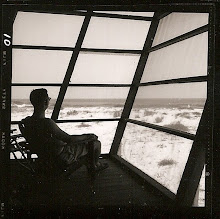
I have a confession to make. I haven’t been completely truthful with you about something.
When I wrote a few weeks ago about suffering through the absolute peak of my preteen geekiness, I said the worst moment was on my 10th birthday in February 1964 (“The Fishing Trip, September 28, 2009). Upon further review, I must admit I lied.
In my defense, I wrote that because I was confronted with a Jack Marshall photograph of me in a little aluminum fishing boat. My own horror at my appearance came roaring back into my consciousness when I found that picture, but it was more than mitigated by my remembrance of that wonderful day of male bonding with my Dad, which at the time I considered the greatest day of my life and still would be were it not for the birth days two-plus decades later of my own children, James and Catherine.
No, the truth is the absolute worst occurred a bit later, when as a 5th grader at St, Joseph’s Elementary School in Shreveport, I was photographed (see below) wearing glasses so thick and so hideous that even now I literally shudder when I find it necessary to gaze upon my own image. On top of that, at some point during those same years, my ears grew faster than the rest of my head. Fortunately this was long after the Disney movie “Dumbo” was popular and long before the release of the critically acclaimed “Elephant Man” film, so the worst my so-called friends could come up with was the nickname “Big Ears” or just “Ears” which I was called fairly regularly for quite a few years. (Actually, as I think about it now, some of them still call me that, though I cannot for the life of me see why).
My father, Jack Marshall, either loved his youngest son so much that he couldn’t see the deformed youngster staring at him through the viewfinder of his camera. Or more likely, he could see all too well but he was too compassionate a father (and fellow male member of the human race) to let on. Because my friends, there are lots and lots of pictures of me from that period.
One reason there are so many pictures from that time was because in addition to being Jack Marshall’s always willing portrait subjects, we the
Actually, despite my inner and outer geek, as I look now at the “First Day of School” picture at the top of this entry, I do see some things I like. Those are real Chuck Taylors I’m wearing, which I got not so much because they were cool (they weren’t back then, but they are now) as cheap. And I do believe my backpack, with its “
But the real reason I like this photo so much is Mary. Of course she is stylish – then as now. Of course she is much more thoughtfully coiffed and attired, no doubt the result of having actually thought about her first day outfit at least the night before (unlike my roll out of bed and put on what I wore the day before look). No, what I really like about this photo is the way Mary is looking up at me, idolizing her older brother for his wisdom and leadership as we head into the wild unknown of another academic year. This may be the only picture that captures Mary in that pose, for I can tell you with certainty it was short-lived. Pretty soon after that, she discovered that I, like most other boys of a certain age, didn’t have much of a clue about anything.
At some point, by the time we were both in high school, Jack Marshall could no longer count on getting us to pose for him every year. At least not on the first day of school. Definitely not cool. Now I would give anything had the chronicle continued, because even though there are photographs he took of us right up until his death in 1976, nothing quite compares to these special moments he commemorated each September, when we were unfailingly hopeful and the school year report card still was unmarked.
As for Mary, I’m pretty sure we’ve come full circle, and once again she does admire some things about me. After some indifferent patches in our high school and college years, we’ve been through a lot together, including marriages and divorces, parenthood and aunt- and uncle-dom, happiness and pain, lots of fun and not a few tears. Over the past 20 or so years, we’ve been downright nice to each other, most of the time.
But I look at Dad’s “First Day of School” photo and realize there is no chance I’ll ever see quite that look of sibling love and loyalty again. It is too childlike, in the best sense of the word, ever to be repeated. Nonetheless, there it is, forever preserved by the photographic talent and the love of tradition that were the trademarks of our wonderful father, Jack Marshall.










